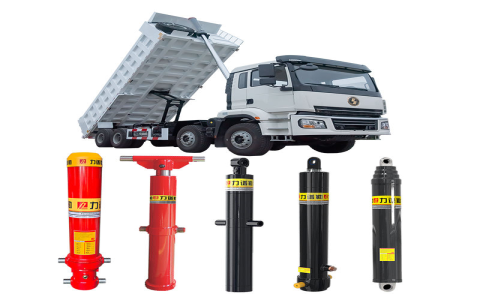If you operate or maintain a dump truck, you know the heart of its lifting power lies in the hydraulic cylinder. When that crucial component fails, productivity grinds to a halt. This definitive guide cuts through the complexity and zeroes in on the workhorse of the industry: the 2-stage telescopic hydraulic cylinder. We’ll break down how it works, why it’s the preferred choice for countless applications, and what you need to know to select, maintain, and troubleshoot this engineering marvel. Whether you’re a seasoned fleet manager or an owner-operator, understanding this key component is non-negotiable for maximizing uptime and efficiency.
What Exactly is a 2-Stage Telescopic Hydraulic Cylinder?
Let’s start with the basics. A telescopic hydraulic cylinder, often called a “multi-stage” cylinder, is designed to provide a long extension from a compact retracted length. Think of it like a collapsible telescope: multiple sleeves (or stages) nest inside one another. A 2-stage telescopic hydraulic cylinder has two of these moving sleeves.
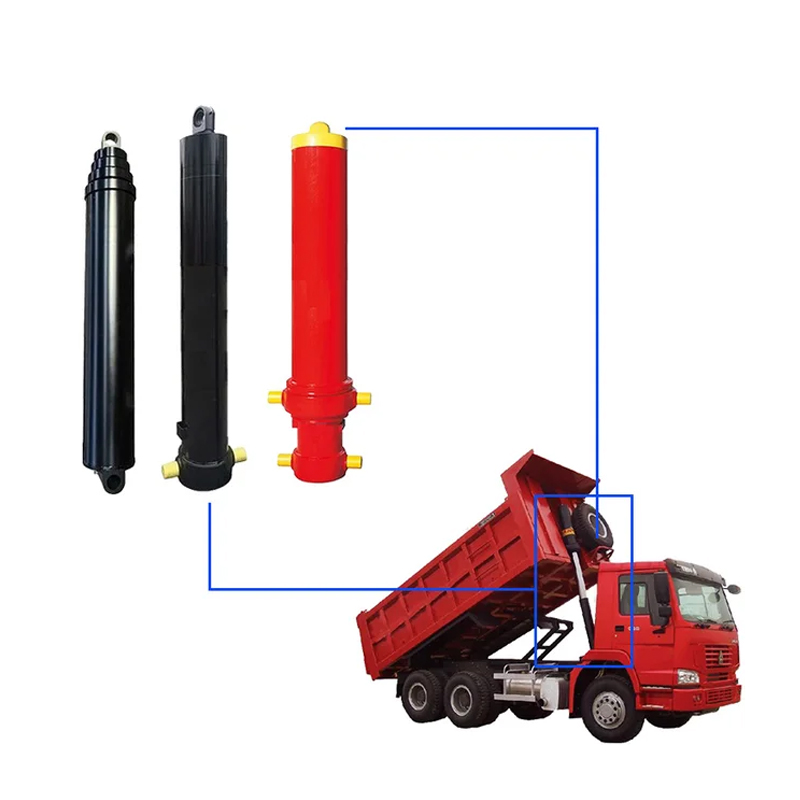
Here’s the simple sequence of operation: When hydraulic pressure is applied, the largest barrel (the first stage) extends first. Once it reaches its full stroke, the second, smaller stage begins to extend. This design allows for a significant reach, which is perfect for applications like dump truck beds that need to elevate high to unload their contents. The retraction sequence is the reverse, with the second stage retracting fully before the first stage can begin to close.
Why Choose a 2-Stage Design for Your Dump Truck?
You might wonder why a 2-stage model is so common. The benefits are clear and directly impact your bottom line.
- Optimal Balance of Power and Compactness: For many standard dump truck bodies, a 2-stage cylinder provides the perfect blend of lifting height and retracted length. It offers more stroke than a single-stage cylinder without the added complexity and potential cost of a three or four-stage design.
- Enhanced Stability: With fewer stages than more complex cylinders, the 2-stage design often boasts greater rigidity and stability during lifting, especially under heavy, off-center loads.
- Simplified Maintenance Fewer stages mean fewer seals and potential leak points. This translates to lower long-term maintenance costs and easier troubleshooting.
- Cost-Effectiveness: For the performance it delivers, the 2-stage telescopic cylinder is often the most economical choice, providing reliable power without over-engineering the solution.
2-Stage vs. 3-Stage Cylinders: A Head-to-Head Comparison
Choosing the right cylinder often comes down to this comparison. The best choice depends entirely on your specific truck and job requirements.
| Feature | 2-Stage Telescopic Cylinder | 3-Stage Telescopic Cylinder |
|---|---|---|
| Best For | Standard dump trucks, medium-duty applications, where a balanced stroke is needed. | Long-haul trailers, high-lift dump bodies, specialized applications requiring maximum extension. |
| Retracted Length | Shorter for the same stroke compared to single-stage, but longer than a 3-stage. | Extremely compact, allowing for more cargo space or a lower truck profile. |
| Extended Height | Good lifting height, suitable for most common dumping scenarios. | Superior lifting height, ideal for dumping into very high receptacles. |
| Stability & Durability | Generally higher due to fewer moving parts and thicker barrel walls. | Can be slightly less rigid at full extension due to the thinner final stage. |
| Cost & Maintenance | Typically more affordable and easier/cheaper to maintain. | Higher initial cost and more complex servicing due to an additional stage and seals. |
As John “Mac” MacGregor, a certified heavy equipment mechanic with over 25 years of field experience, puts it: “For 80% of the dump trucks on the road, a well-built 2-stage telescopic hydraulic cylinder is the sweet spot. It gives you the lift you need without the added cost and potential fuss of a third stage. Unless you’re consistently dumping into massive industrial hoppers, the extra complexity is often unnecessary.”
Key Specifications You Must Understand Before Buying
Don’t just buy a cylinder by model number. Understanding these specs ensures a perfect fit and optimal performance for your dump truck.
- Bore Diameter: The internal diameter of the cylinder’s main barrel. A larger bore generates more lifting force but may require a larger pump.
- Rod Diameter: The diameter of the piston rod. A thicker rod is more resistant to bending and buckling under stress.
- Stroke Length: The total distance the cylinder can extend. For a telescopic cylinder, this is the combined stroke of all stages.
- Retracted Length: The total length of the cylinder when fully closed. This is critical for fitting within your truck’s frame.
- Collapsed Pin Center to Pin Center: A more precise measurement than just retracted length, this is the distance between the mounting pins when the cylinder is fully retracted.
- Operating Pressure (PSI): The maximum pressure the cylinder is designed to handle. Exceeding this can lead to catastrophic failure.
Common Problems and Proactive Maintenance Tips
A little preventative care goes a long way. Most cylinder failures are predictable and avoidable.
Problem 1: Cylinder Drift or Sagging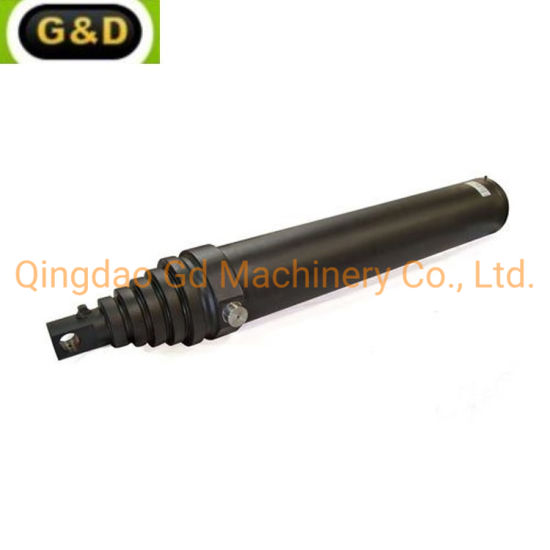
Problem 2: External Hydraulic Fluid Leaks
This is the most visible sign of trouble. Leaks typically occur at rod seals, gland nuts, or mounting pins. A single drop per minute can add up to gallons of lost hydraulic oil over a year, costing you money and creating an environmental hazard.
Problem 3: Bent Rod or Barrel Damage
Physical damage is often caused by improper operation (e.g., side-loading the cylinder), a loose mounting, or an impact. A bent rod will quickly destroy rod seals, leading to leaks.
Pro Maintenance Checklist:
- Visual Inspections are Key: Before every shift, take two minutes to look for leaks, dents, or corrosion on the cylinder rod and barrel.
- Keep it Clean Wipe down the exposed rod regularly. When the cylinder retracts, any grit or grime on the rod gets pulled back inside, acting as an abrasive that wears out seals.
- Check Fluid Levels and Condition: Contaminated or degraded hydraulic oil is a primary killer of seals and internal components. Follow the manufacturer’s service intervals for fluid changes.
- Listen for Noises: Knocking or chattering sounds during operation can indicate cavitation (aeration in the fluid) or issues with the pump, which can strain the cylinder.
Answers to Your Top Questions
How long should a dump truck hydraulic cylinder last?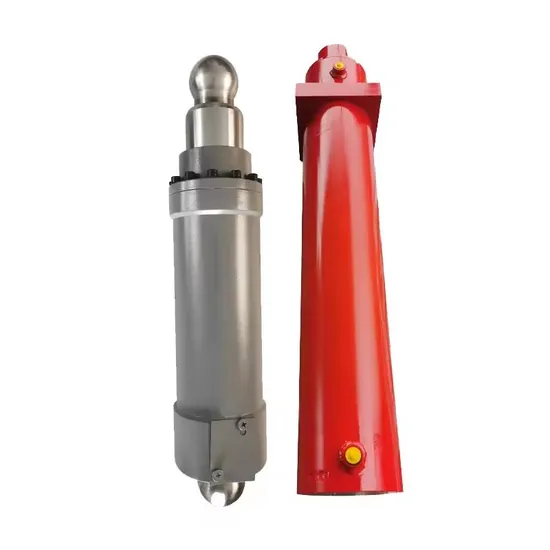
Can I repair a leaking telescopic cylinder myself?
While replacing external hose fittings is a straightforward fix, rebuilding a telescopic cylinder is a job for a specialized hydraulic shop. It requires specific tools, a clean environment, and expert knowledge to properly disassemble, re-seal, and reassemble the stages without causing damage. Attempting a DIY rebuild often leads to more expensive repairs down the line.
What’s the difference between a telescopic cylinder and a single-acting cylinder?
This is a common point of confusion. “Telescopic” describes the physical multi-stage design. “Single-acting” describes how it’s powered. Most dump truck telescopic cylinders are single-acting, meaning hydraulic pressure extends them, and gravity (often assisted by the weight of the bed) retracts them. Double-acting cylinders use hydraulic pressure for both extension and retraction, which is less common for standard dump truck applications.
How do I know if my cylinder is the right capacity for my truck?
The cylinder must be rated to handle the truck’s Gross Vehicle Weight Rating (GVWR). Undersizing a cylinder is extremely dangerous. Always consult your truck’s OEM specifications or a reputable hydraulic cylinder manufacturer. They can calculate the required capacity based on your truck’s weight, bed size, and desired dump angle. For reference, the National Highway Traffic Safety Administration (NHTSA) maintains standards for vehicle components, underscoring the importance of using correctly rated parts.
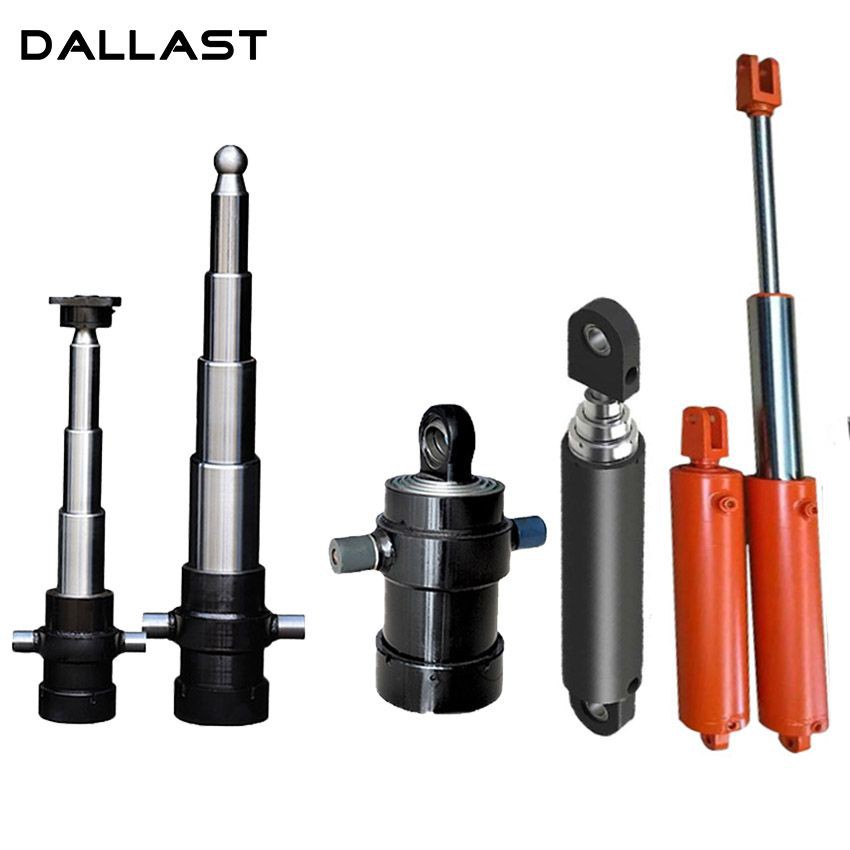
By understanding the ins and outs of your 2-stage telescopic hydraulic cylinder, you’re not just maintaining a part—you’re investing in the reliability and profitability of your operation. Choose wisely, maintain proactively, and it will pay you back with years of dependable service.
Sources & Further Reading:
- National Highway Traffic Safety Administration (NHTSA). “Vehicle Safety Standards.” https://www.nhtsa.gov/
- National Fluid Power Association (NFPA). “Fluid Power Basics.” https://www.nfpa.com/
- Fluid Power Institute (FPI). “Contamination Control Guide.” (Report Reference, 2021).
